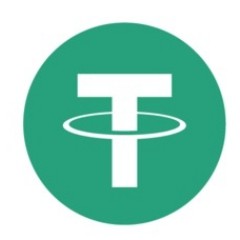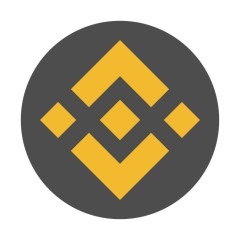Which Stablecoin Runs on the Most Chains?

Summary: Stablecoins address the crypto volatility problem by holding a steady value, usually tied to the U.S. dollar. As stablecoins become more tightly integrated into the crypto ecosystem, investors need stablecoins to operate on multiple blockchains. In this report, we examine which stablecoins are capable of operating on multiple chains, and why this interoperability is important.
Stablecoins peg their market value to an external reference. That could be a fiat currency (like the U.S. dollar), a cryptocurrency (like Ethereum), or another reserve asset (like gold). It’s this peg that allows them to maintain stable valuations.
But most stablecoins start off running on a single blockchain, typically Ethereum. The new generation of stablecoins cross blockchains, without having to constantly swap cryptocurrencies. One US Dollar Coin (USDC) on Ethereum, for example, can be bridged over to Algorand, where it retains its dollar value.
As an example, it’s similar to countries that accept US dollars, without requiring visitors to exchange into their local currency: buy once, use anywhere.
Our thesis is the more widely accepted a stablecoin is between blockchains, the more it’s likely to become an industry standard. Think about how the US dollar is currently the global reserve currency, making the dollar the “industry standard.” The same will happen, we believe, with stablecoins.
By removing the restraints of operating within a single ecosystem, multi-chain stablecoins present benefits to investors:
- Increased Efficiency: Multi-chain stablecoins reduce the time and hassle spent swapping a stablecoin on one exchange into a stablecoin on another.
- Lower Fees: Multi-chain stablecoins remove transaction fees when swapping between coins, which may also be taxable events. Also, transaction fees may be negligible on blockchains like Algorand (compared to Ethereum).
- Regulatory Clarity: By holding a single stablecoin, investors can steer clear of unclear regulation, such as California’s bill that prohibits trading stablecoins that have yet to prove their reserves within the state.
In short, multi-chain stablecoins make things faster, cheaper, and easier: they’re like a “universal adapter” to share and store value across blockchains.
Let’s look at the top 3 most popular multi-chain stablecoins by market capitalization. We’ll discuss some key features as well as their supported blockchains.
Top 3 Multi-Chain Stablecoins
| Coin | Market Capitalization | Supported Chains |
| USDC | $42,755,335,638 | Algorand, Arbitrum One, Avalanche, Flow, Ethereum, Hedera, NEAR, Optimism, Polkadot, Polygon, Solana, Stellar, TRON |
| USDT | $69,793,018,386 | Algorand, Avalanche, EOS, Ethereum, Kusama, Liquid Network, NEAR, Omni, Polkadot, Polygon, SLP, Solana, Statemine, Statemint, Tezos, TRON |
| BUSD | $23,080,958,506 | Avalanche, BNB Smart Chain, Ethereum, Polygon, BNB Beacon Chain |

US Dollar Coin (USDC)
USDC is a fully-reserve backed stablecoin that is 100% backed by cash and short-dated US treasuries by its parent company Circle. Claiming to be always redeemable for US Dollars, the coin’s reserves are held in the custody and management of financial institutions such as BlackRock and BNY Mellon.
Ranking as the fifth-largest cryptocurrency as of this writing, with a market capitalization of nearly $44 billion, USDC offers various benefits to investors, including easy conversion from fiat to crypto, reliable payment rails, and various yield farming products.
Regarding interoperability, USDC has clear plans to operate on many chains. It was initially available on Ethereum, but soon spread to Algorand, Avalanche, Hedera, Flow, Polygon, Solana, Stellar, and TRON. Most recently, Circle announced that USDC would be ported to the Arbitrum One, NEAR, Optimism, and Polkadot networks, with plans to enter the Cosmos ecosystem in early 2023.

Tether (USDT)
Owned by iFinex, a Hong Kong-registered company, Tether is the third-largest cryptocurrency as of this writing, with a market capitalization of over $68 billion. Similar to USDC, Tether is used primarily by investors to keep a stable store of value, even when transferring between cryptocurrency exchanges and traditional financial systems, making it an “on-ramp” and “off-ramp” to crypto.
As of this writing, USDT works on 16 networks: Algorand, Avalanche, EOS, Ethereum, Kusama, Liquid Network, NEAR, Omni, Polkadot, Polygon, SLP, Solana, Statemine, Statemint, Tezos, and Tron.

Binance USD (BUSD)
The third largest stablecoin, BUSD, ranks seventh amongst all cryptocurrencies with a market capitalization of just over $21.5 billion.
Compared to USDT and USDC, BUSD is issued on the least number of chains. Currently supported: Avalanche, BNB Smart Chain, Ethereum, Polygon, and the BNB Beacon Chain, with plans for more integrations still in the works.
However, a benefit of owning BUSD is that it is the default stablecoin on Binance, the world’s leading crypto exchange. In order to incentivize users to hold BUSD, the company offers promotions such as zero-fee ETH/BUSD transfers, which could save investors significant gas fees when cashing out ETH.

Why Cross-Chain Stablecoins Matter for Investors
Think of different blockchain networks as separate countries, with their own languages and currencies. Having value on one blockchain doesn’t mean you can carry that value into another network: it’s like trying to spend your Swiss francs in the U.S., while speaking German.
Here’s how beginners and experienced coin investors alike can benefit from stablecoin interoperability:
For beginning investors: Multi-chain stablecoins allow beginner investors to explore different chains and gain firsthand experience on any supported network. They give you an opportunity to “play around” with various chains.
This not only introduces more money into the blockchain economy, it also increases usage across chains, helping value flow between ecosystems. It’s good for the industry.
For experienced investors: Multi-chain stablecoins allow enormous savings of time and money, as we described above. Instead of selling one stablecoin and buying another (time-consuming, taxable, and expensive), cross-chain stablecoins just store the value until you’re ready to use it on either chain.
Removing the barriers between different blockchains allows experienced investors to take advantage of opportunities across multiple networks, like a global currency that works in different countries.
Investor Takeaway
Unless you believe in a winner-takes-all scenario, where one blockchain becomes the industry standard, we are likely to have a multi-chain future. Ideally, then, decentralized products will work across blockchain networks.
We believe the future of DeFi will favor products and protocols that work seamlessly across blockchains. As the IMF highlights in its 2021 paper Blockchain Interoperability, “Rapid change and innovation is taking place in payment technologies, which are enabling faster, cheaper, efficient domestic and cross-border payments – one of the key paradigms will be interoperability between these different channels.”
Multi-chain stablecoins present a solution to the interoperability issues of the existing blockchain environment. Moreover, the stablecoins that move most quickly to support different blockchains are likely to achieve network effects that will give them a sustainable competitive advantage.
As an investor, multi-chain stablecoins are still not investment opportunities in themselves (they hold their value, after all). But they allow faster, cheaper, easier access to different chains, making them a powerful part of the investor’s toolkit.






 Bitcoin
Bitcoin  Ethereum
Ethereum  Tether
Tether  USDC
USDC  TRON
TRON  Dogecoin
Dogecoin  Cardano
Cardano  Bitcoin Cash
Bitcoin Cash  Chainlink
Chainlink  LEO Token
LEO Token  Monero
Monero  Stellar
Stellar  Zcash
Zcash  Litecoin
Litecoin  Hedera
Hedera  Dai
Dai  Cronos
Cronos  OKB
OKB  Tether Gold
Tether Gold  Ethereum Classic
Ethereum Classic  KuCoin
KuCoin  Gate
Gate  Algorand
Algorand  Cosmos Hub
Cosmos Hub  VeChain
VeChain  Dash
Dash  Tezos
Tezos  Stacks
Stacks  TrueUSD
TrueUSD  IOTA
IOTA  Basic Attention
Basic Attention  Theta Network
Theta Network  Decred
Decred  NEO
NEO  Synthetix
Synthetix  Qtum
Qtum  Ravencoin
Ravencoin  0x Protocol
0x Protocol  DigiByte
DigiByte  Zilliqa
Zilliqa  Nano
Nano  Holo
Holo  Siacoin
Siacoin  Numeraire
Numeraire  Waves
Waves  Ontology
Ontology  Status
Status  Enjin Coin
Enjin Coin  BUSD
BUSD  Pax Dollar
Pax Dollar  Hive
Hive  Lisk
Lisk  Steem
Steem  Huobi
Huobi  OMG Network
OMG Network  NEM
NEM  Bitcoin Gold
Bitcoin Gold  Augur
Augur  Ren
Ren